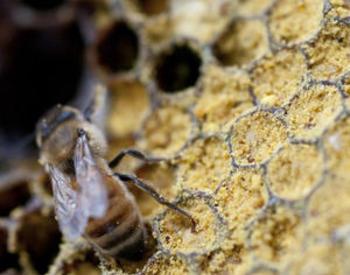That tiny anthill you noticed may actually be the entrance to a ground-nesting bee family. Next time you come across one of these mini-hills, take a closer look!
Ground-nesting bees may have a sentry posted at the entry point. If you look closely, you might see a tiny, fuzzy head looking back.
A single female bee will often excavate a ground nest by using her saliva and tough mandibles to break up and move soil. She will continue to work in this way until she has created a tunnel. Her burrow may consist of one long tunnel with nest cells at the bottom or one with several side branches and offshoots.
She makes the walls smooth by using the tip of her abdomen to tamp the walls, or by applying mud, extra soil, or using a gland-produced substance that is waxy or cellophane-like. This will help keep moisture and soil bacteria out.
When finished, she will collect pollen and nectar, mixing or layering them in the nest cells. She will lay her eggs near this food source.
Other bees prefer to use natural or abandoned cavities for their nests. They will alter the cavity to fit their needs by reducing the diameter of the tunnel or widening it.
Bees may nest far away from others or near each other in aggregations. They may nest communally by sharing an entrance with separate tunnels or semi-socially by using the same nest and sharing duties.
Eusocial bees share a nest (splitting nest-making and reproductive duties), and each mother will meet and work with all of her own daughters. One female may guard the nest entrance, only letting in related bees. They distinguish between relatives and strangers using scent.
Cuckoo bees try to sneak into other bees' nests to lay eggs near the food meant for the offspring of the nest builder. When these eggs hatch, the newly emerged cuckoo bees will kill the host’s offspring and eat the victim’s pollen and nectar. That is one reason a sentry bee is so important for some species.
Next time you’re walking outdoors, keep an eye out for these amazing ground dwellers!



















